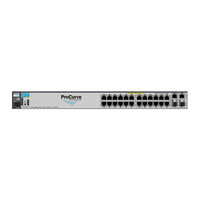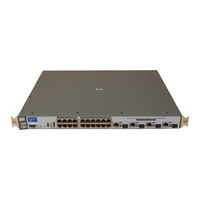HP ProCurve 4100 Series Network Switch Manuals
Manuals and User Guides for HP ProCurve 4100 Series Network Switch. We have 3 HP ProCurve 4100 Series Network Switch manuals available for free PDF download: Function Manual, Access Security Manual, Replacement Instructions
HP ProCurve 4100 Series Function Manual (306 pages)
Access Security Guide ProCurve 2600, 2600-PWR, 2800, 4100, 6108 Series
Table of Contents
Advertisement
HP ProCurve 4100 Series Access Security Manual (241 pages)
Brand: HP
|
Category: Network Router
|
Size: 4.34 MB
Table of Contents
HP ProCurve 4100 Series Replacement Instructions (2 pages)
Switch Fan Tray
Advertisement
Advertisement


